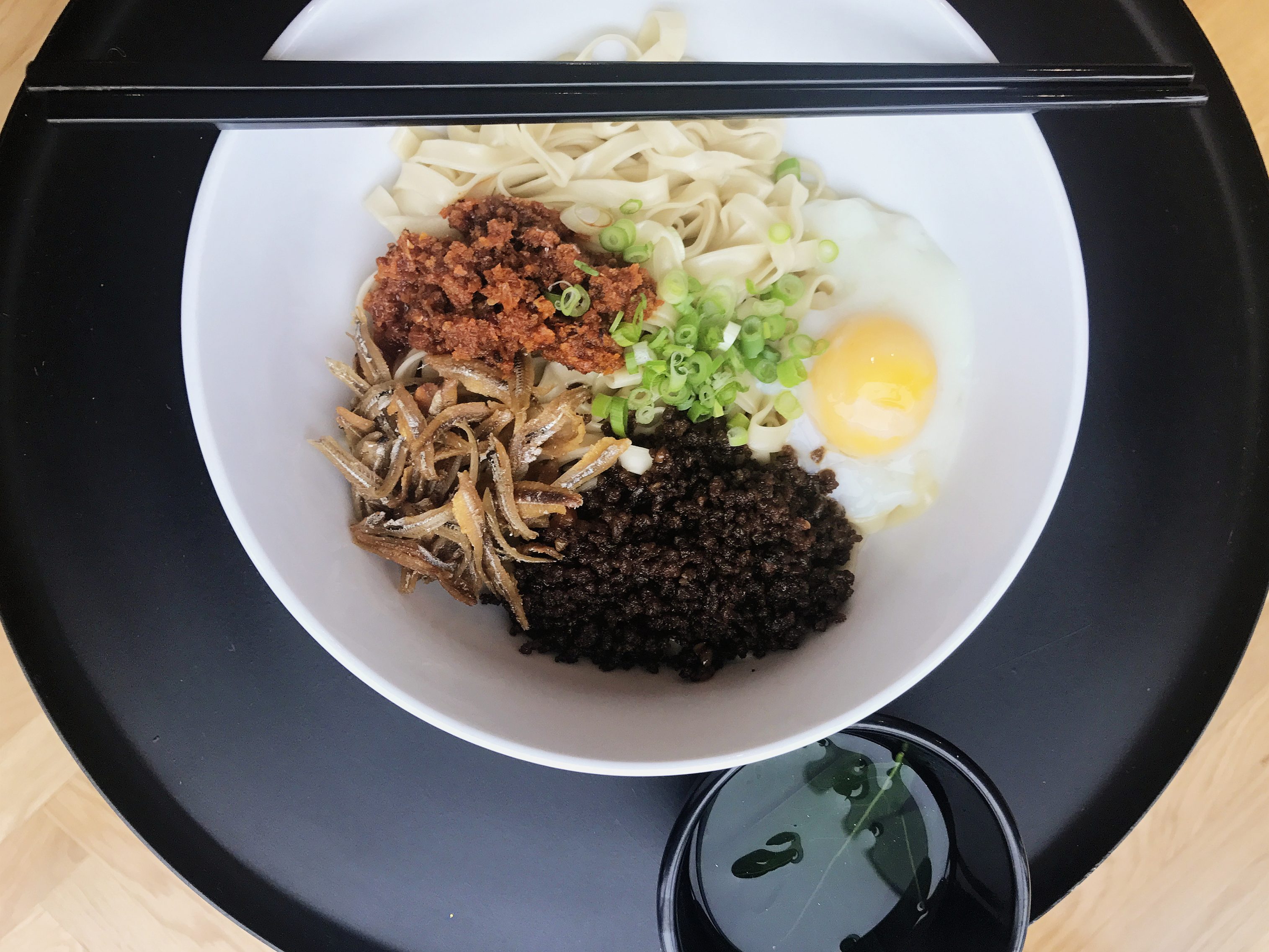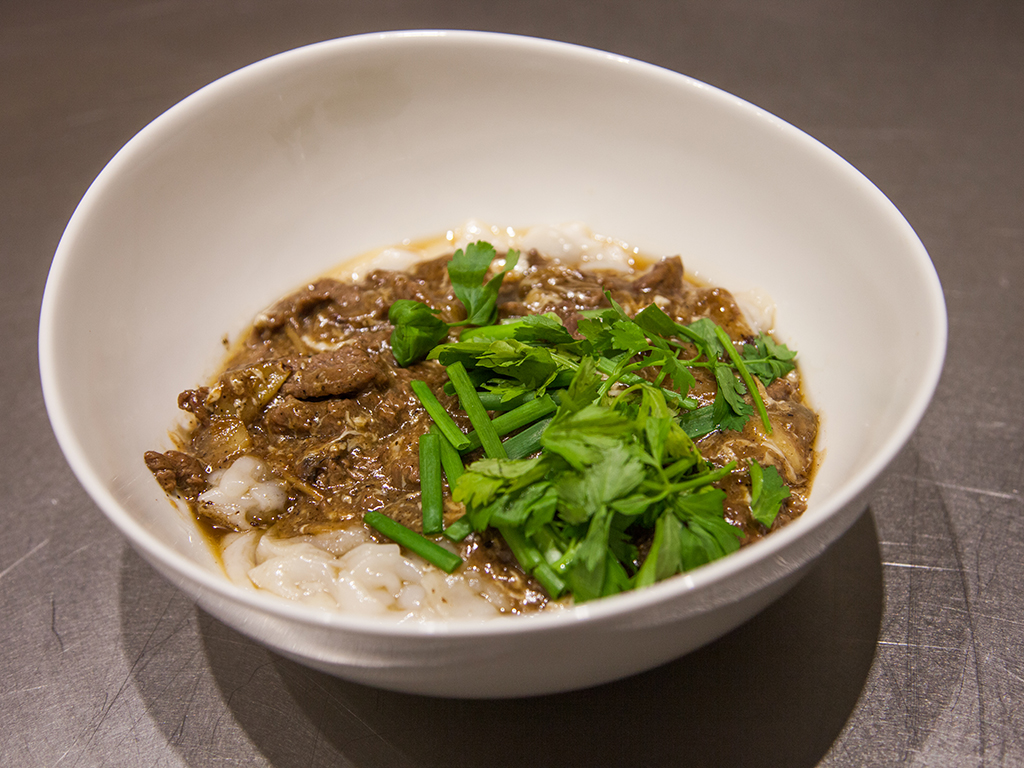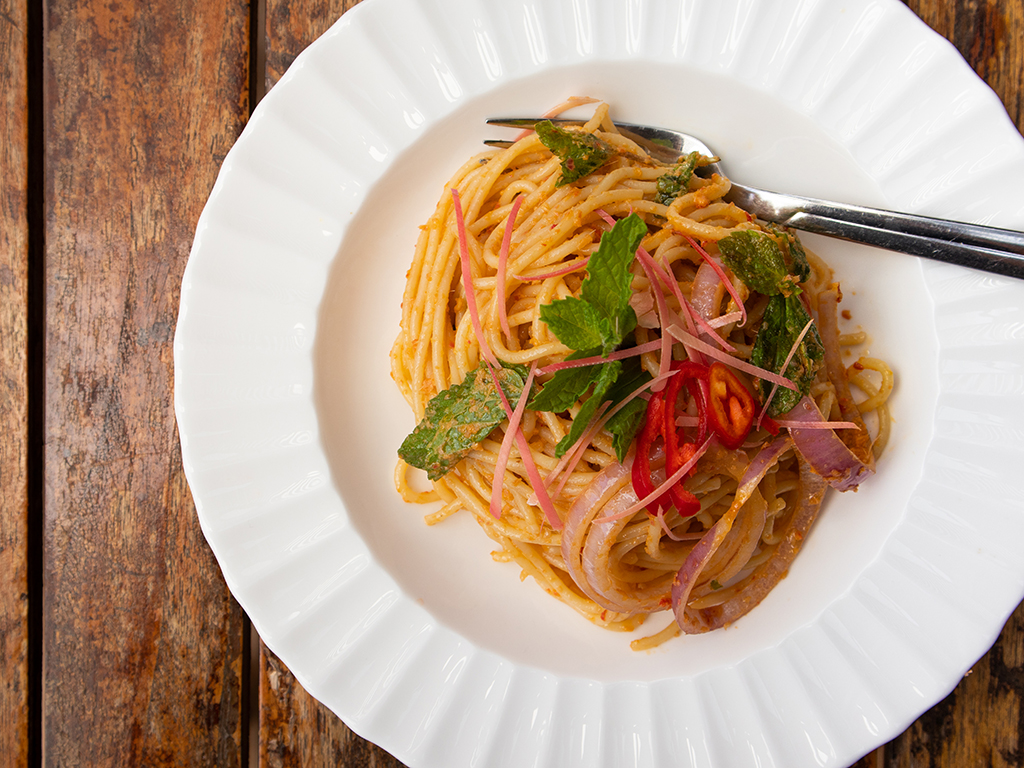
Any fan of Italian food worth their salt knows pesto – a strikingly bright green sauce traditionally made with fresh basil, parmesan cheese, pine nuts, garlic and extra virgin olive oil, commonly served tossed through pasta for a flavourful meal. Despite its seemingly simple list of ingredients, eating pesto in a restaurant isn’t exactly what one should order if they are on a budget. Neither is making it at home any cheaper thanks to the pretty high prices of good quality olive oil, sweet basil, pine nuts and that mound of freshly grated parmesan cheese you’ll be using to make this dish. And it’s not just because you’re living in Malaysia where, well, we don’t make our own parmesan or grow pine nuts. These ingredients aren’t all that cheap around the world either.
This is probably the catalyst for the creation of several budget-friendly pesto recipes, mostly using local herbs and greens, some nuts or another, and, occasionally, no cheese at all! And then you have fridge pesto, which is typically made with any greens and nuts one has leftover in the fridge and pantry. It’s a great way to avoid throwing your produce out, especially if they’re close to wilting or you need to get your fridge cleared before going away. In Malaysia, coriander is not an unusual addition to some of the more local-inspired pesto dishes. Our recipe for ginger flower pesto, however, does not use coriander. In fact, aside from some mint as garnishing, there’s nary a green leave in this recipe at all.
Let’s get local
Aside from the spaghetti, sea salt, olive oil and lemon, the rest of the ingredients are grown locally. You may even find some of them in your own backyard at home. Ginger flower, chilies, lemongrass, garlic and onion are all budget-friendly ingredients, and the only thing you’re going to splurge your hard-earned money on is for some nice extra virgin olive oil, and a lemon.
While this delicious dish gets its name from the beautiful ginger flower, there is a secret ingredient that absolutely makes this dish while rendering it completely non-vegetarian friendly: prawn paste. More affectionately known as otak udang, which literally means prawn brains, prawn paste gives this ginger flower pesto recipe that moreish kick, making this pasta dish one that is incredibly difficult to stop eating. Thank goodness making this pesto won’t break your bank. Swirl some up on a nice plate and you’ve got a fancy meal on a budget – super easy, highly affordable and absolutely delicious home-cooked food for date night, anyone?
But I’m vegetarian!
Don’t worry. If you’re vegan, vegetarian or allergic to prawns, this little tip will still leave you with a pesto that’s equally delicious: swap out prawn paste for some grated coconut sugar or jaggery sugar (gula Melaka or gula merah). Good quality prawn paste is made with coconut sugar anyway, and for those of you who are not fans of petis udang to begin with, you may even prefer this option. We greedily ate up both the prawn paste and coconut sugar versions of our ginger flower pesto, smacking our lips happily with every single bite.
Refreshing, moreish, comforting, deep, a little tangy with a hint of smoky caramel, don’t be surprised if ginger flower pesto becomes a regular meal in your household. It’s a perfect dish for one or ten and just the thought of it makes us long for a bowl or two right now. Trust us, you don’t want to wait too long before trying this recipe out, because you’ll be wondering why didn’t make it sooner!
Selamat menjamu selera!
Ingredients
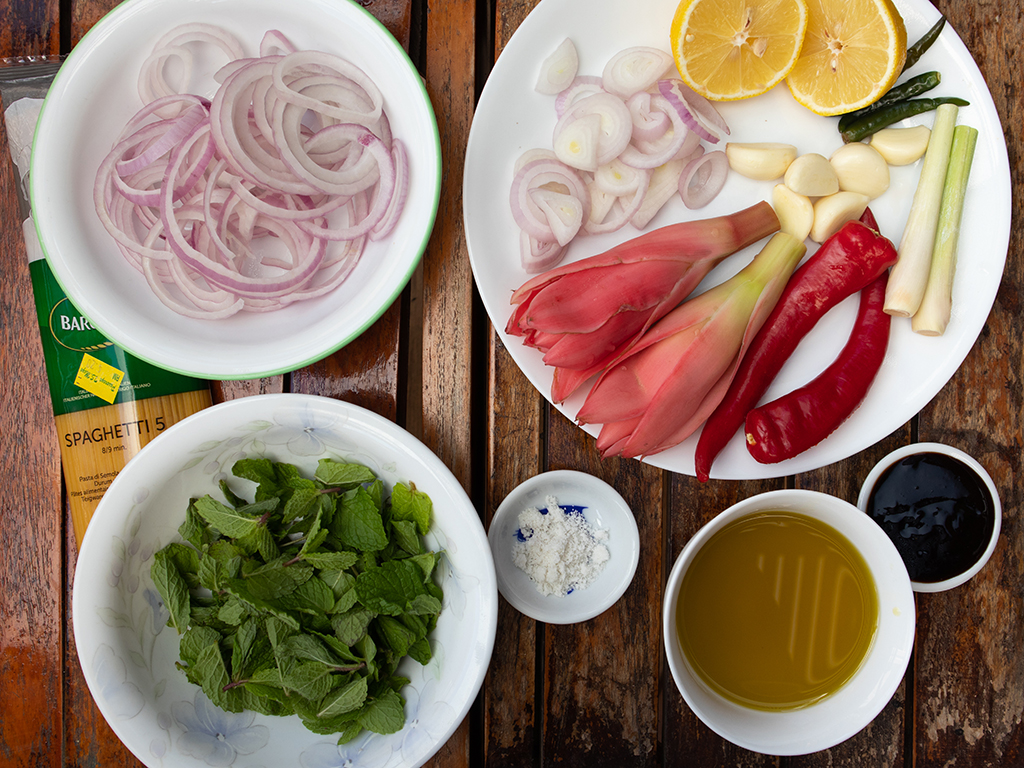
Pesto ingredients
- 137g (2) ginger flower
- 40g (2 large) red chilies, stems removed
- 33g (6 cloves) garlic, peeled
- 5g (3) birds eye chilies (cili padi), stems removed
- 55g (1 small) red onion, peeled
- 26g (2) lemongrass
- 100g (1/2 cup) olive oil
- 131g (1) lemon
- 10g (2 tsp) sea salt
- 80g prawn paste (petis otak udang) diluted with equal amounts water
Dry ingredients
- 250g (1 packet) spaghetti, cooked to packet instructions
Garnishing
- 100g (1 large) red onion, peeled
- 17g mint leaves
- 20g (1 large) red chili
Making ginger flower pesto
- Start by preparing the garnishing. Take about 5 to 6 ginger flower petals and chiffonade. Slice red chili and large onion finely. Reserve.
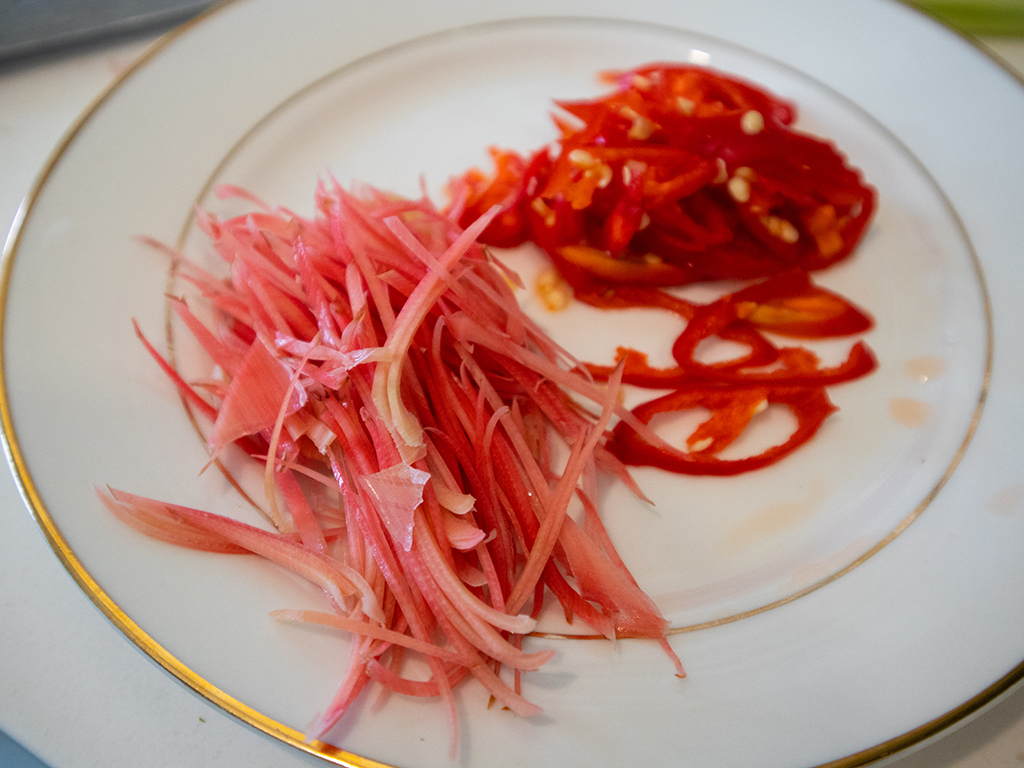
- Cut the rest of the ginger flower, red chilies and red onion into smaller chunks.
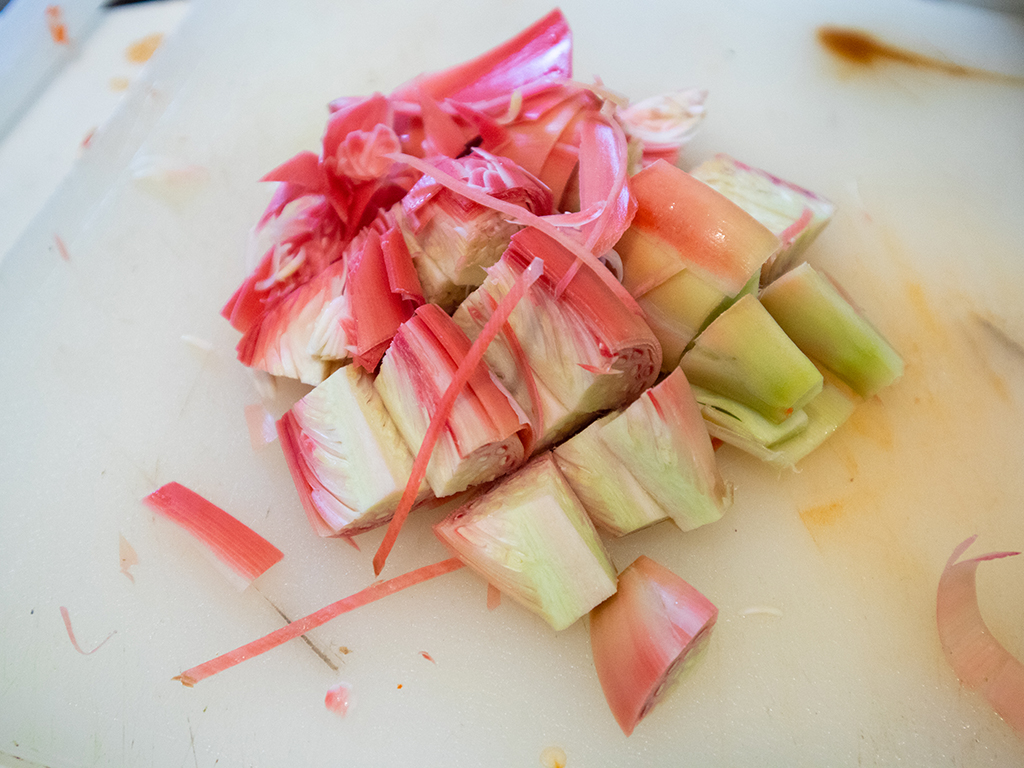
- As lemongrass is very fibrous, you’ll want to cut them as thinly as possible so it blends nicely.
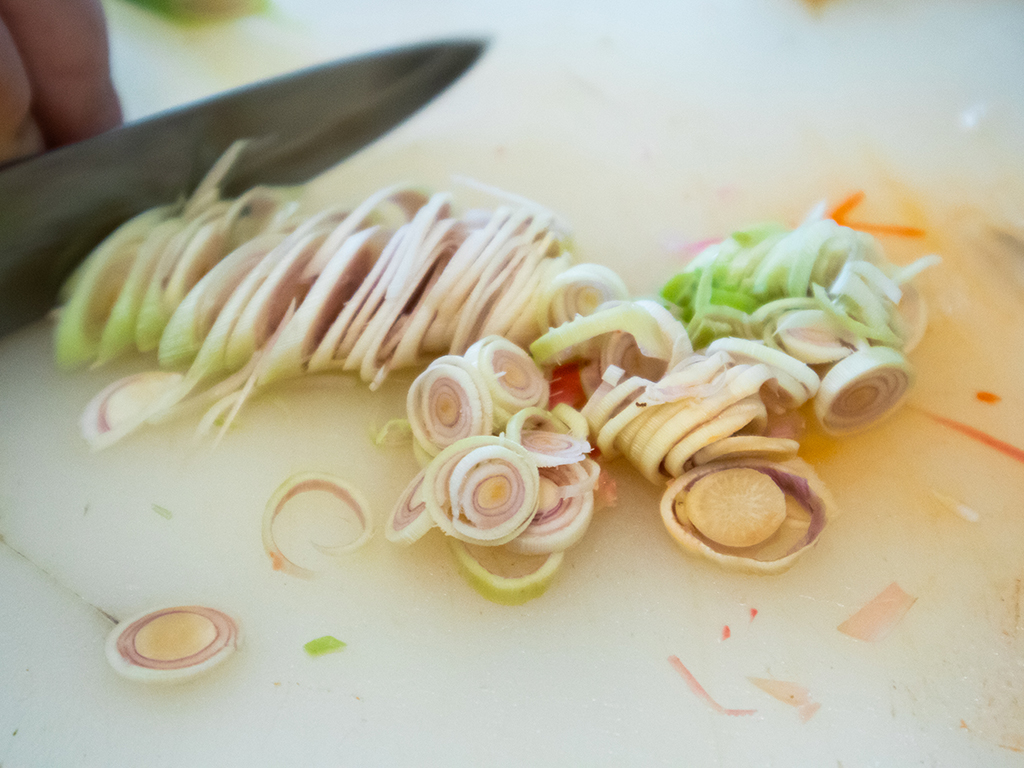
- Blend cut ginger flower, red chilies, red onion and lemongrass along with garlic, birds eye chilies and olive oil until smooth. We recommend using either a high powered blender or a handheld blender as we want to avoid adding any water to this mixture.
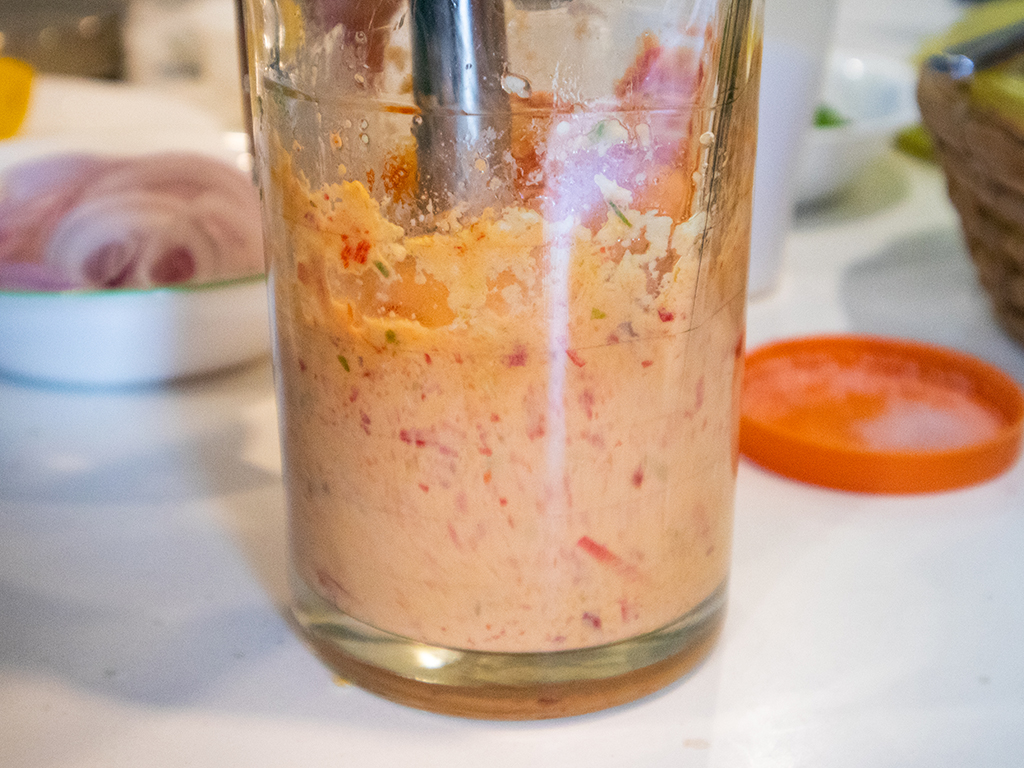
- Next, add about half the amount of freshly squeezed lemon juice. Blend to mix and taste for tartness. You want the sourness of the lemon to be pleasant while complementing the rest of the ingredients. Add a little more if you feel your mixture needs a little more sourness, however, do this only after the rest of the ingredients have been blended in for better accuracy.
- Add in the diluted shrimp paste and blend until thoroughly combined.
- Finally, add the salt and continue blending until mixed through. You may want to add half the salt first and adjust the amount accordingly as different brands of prawn paste may contain different levels of salt. The dish should not be salty. Instead, the salt is there to enhance the flavours of all the other ingredients.
Tossing!
- Add your freshly cooked pasta to a large bowl and top it up with the garnishing ingredients.
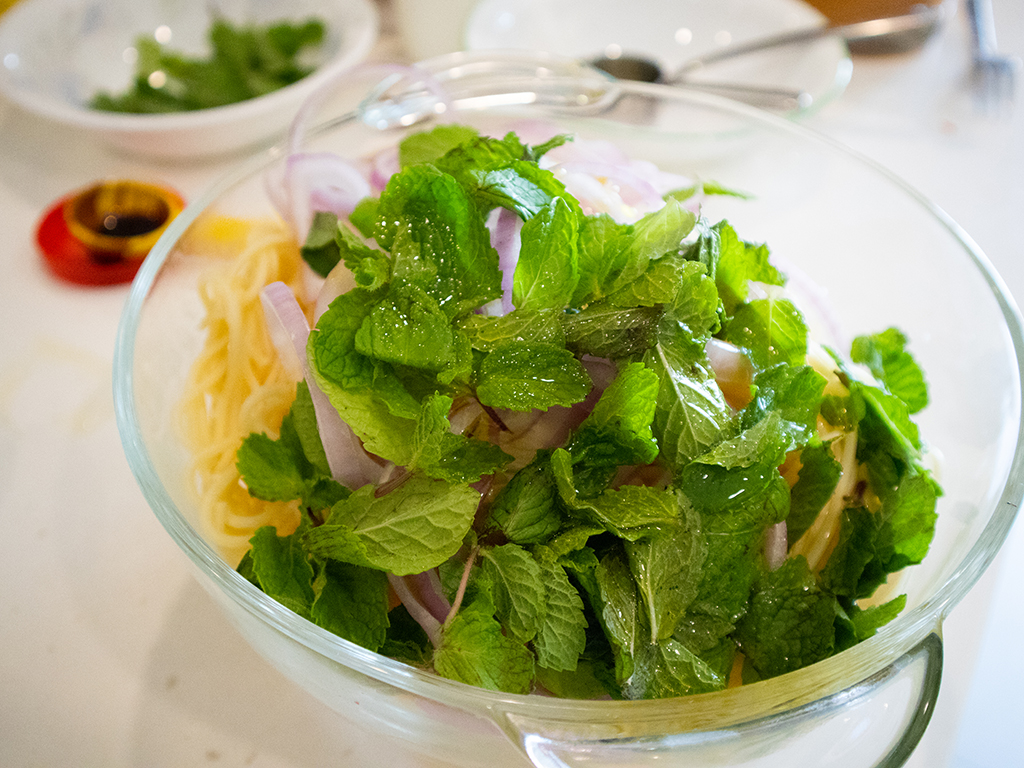
- Pour the blended mixture over the top.
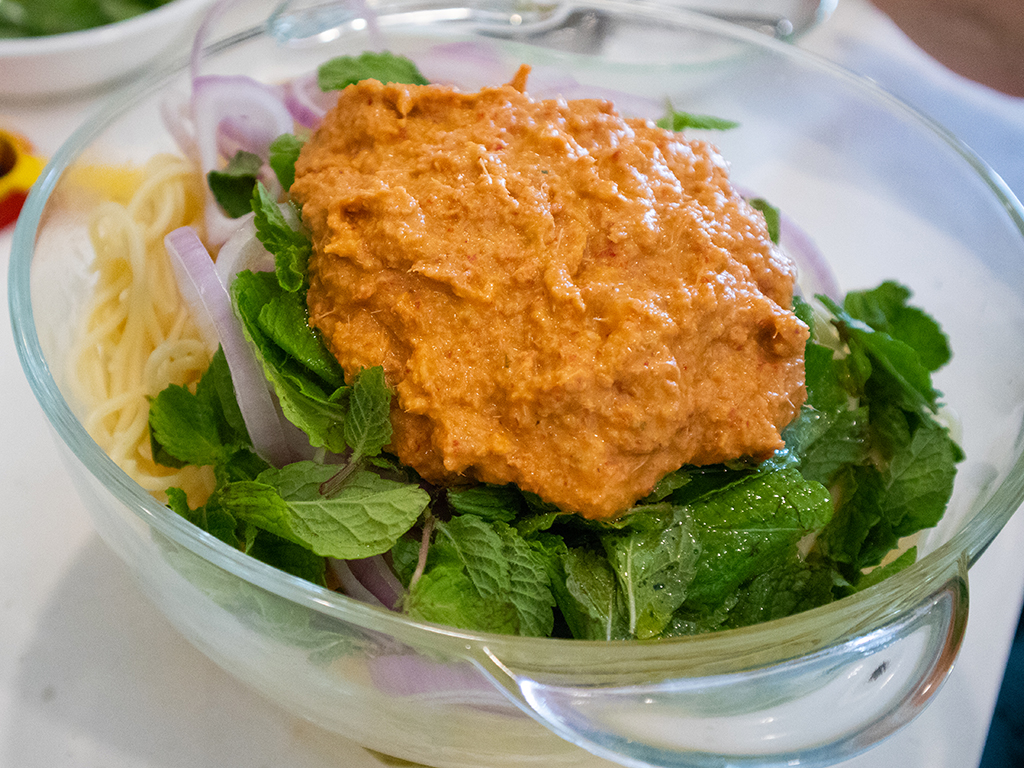
- Toss all the different ingredients together, making sure the spaghetti is coated evenly with the ginger flower pesto.
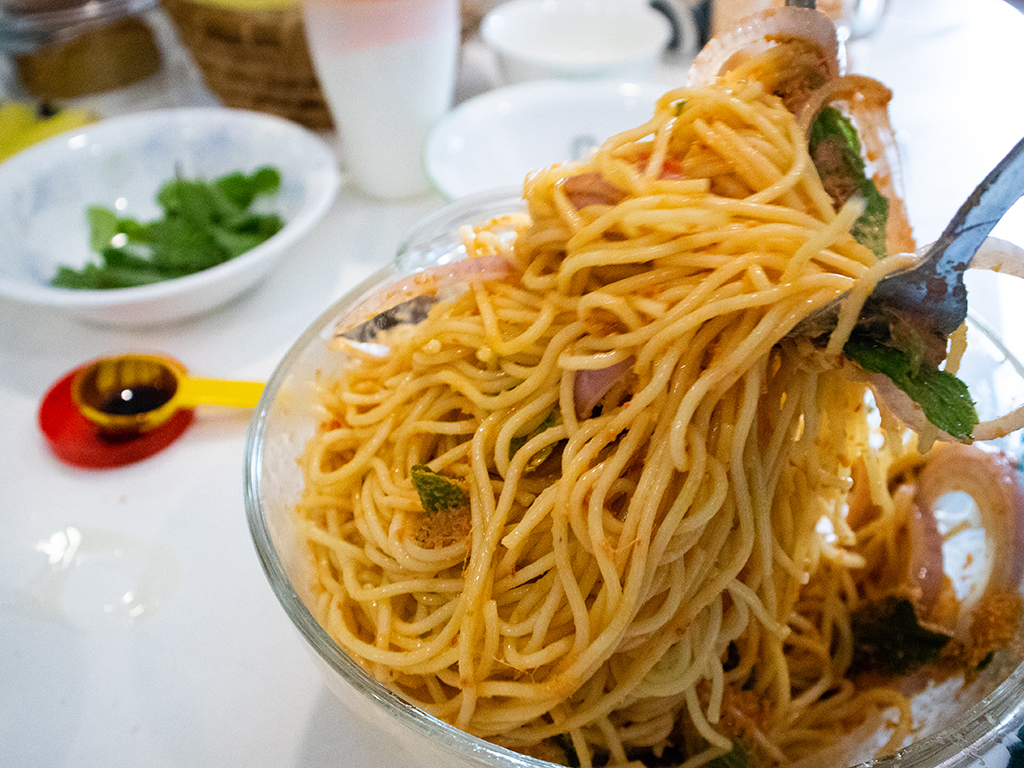
- Serve individually plated, or in a large bowl so everyone can help themselves. Enjoy!
Extra tips
- If you like things super spicy, feel free to add more birds eye chilies to the mix!
- Prefer a creamier emulsion? Reserve some of that water used to boil your pasta and add it to the mixture tablespoon by tablespoon during the blending process until you get the desired consistency.
- If you’re serving both vegetarian/vegan guests alongside non-vegetarians, opt to serve the shrimp paste and coconut sugar on the side so your guests can mix it into their pasta accordingly.
- Got nuts? And by nuts we mean, pine nuts, sunflower seeds, pumpkin seeds and the like? If you do, toss a teaspoon or two of crushed nuts or seeds over your ready-mixed ginger flower pesto pasta as the texture and flavour complements this dish really well!
This dish comes together very quickly and it’s just so good whether you plan to eat in alone or serve to a whole group of friends coming over. Need to cook for a pot luck but don’t have much time on your hands? This ginger flower pesto recipe is the way to go. Plus, you can probably make the pesto a few days in advance and toss it with some freshly cooked pasta and garnishing when you’re good and ready. Or just store the extra pesto in a jar in the fridge and dig it out for another day. We’re uncertain if this pesto can be frozen – there’s never any leftovers when we make it – so if you do have extra, give freezing it a try and let us know if it stays good.
Go on, don’t let us keep you. And when you’re set to dig into your plate of pasta, don’t forget to snap a pic and tag it with the #butterkicap hashtag. And there’s no need to be shy about that second or third helping either!

